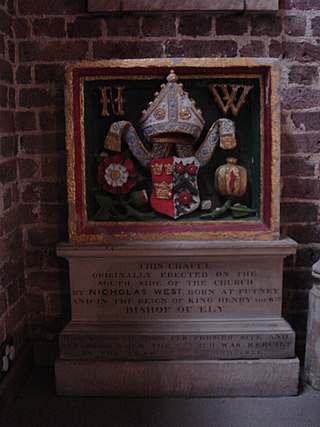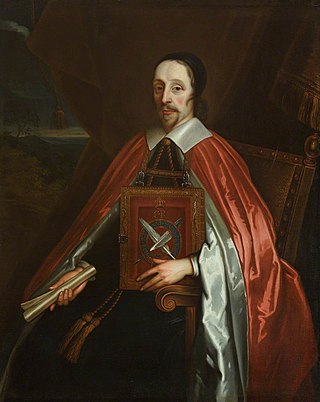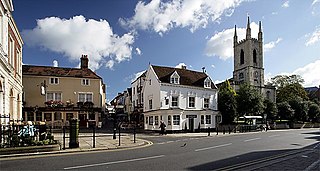Related Research Articles

Richard Neile was an English churchman, bishop successively of six English dioceses, more than any other man, including the Archdiocese of York from 1631 until his death.
Thomas Watson was a Catholic Bishop, notable among Catholics for his descriptions of the Protestant Reformation. Historian Albert Pollard described Watson as "one of the chief Catholic controversialists" of Mary Tudor's reign.
The Dean of the Chapel Royal, in any kingdom, can be the title of an official charged with oversight of that kingdom's chapel royal, the ecclesiastical establishment which is part of the royal household and ministers to it.

Nicholas West, was an English bishop and diplomatist, born at Putney in Surrey, and educated at Eton and at King's College, Cambridge, of which he became a fellow in 1486. He also had periods of study at Oxford and Bologna.

Herbert Croft (1603–1691) was an English churchman, bishop of Hereford from 1661.
John Longland was an English cleric. He was Dean of Salisbury from 1514 to 1521 and Bishop of Lincoln from 1521 to his death in 1547.
Hon. and Very Rev. Gerald Valerian Wellesley was a Church of England cleric who became the Dean of Windsor. A nephew of the Duke of Wellington, he was domestic chaplain to Queen Victoria and played a major advisory role regarding the royal family's personal affairs. He was one of the Queen's chief confidants and often served as an intermediary in her problems and conflicts.
Ralph Brideoake (1612/13–1678) was an English clergyman, who became Bishop of Chichester.
William Wickham (Wykeham) was an English bishop.

John Fisher was a Church of England bishop, serving as Bishop of Exeter, then Bishop of Salisbury.

St George's Chapel, formally titled The King's Free Chapel of the College of St George, Windsor Castle, at Windsor Castle in England is a castle chapel built in the late-medieval Perpendicular Gothic style. It is a Royal Peculiar, and the Chapel of the Order of the Garter. St George's Chapel was founded in the 14th century by King Edward III and extensively enlarged in the late 15th century. It is located in the Lower Ward of the castle.
Harry William Blackburne DSO, MC was an Anglican clergyman, Dean of Bristol from 1934 to 1951.
Henry Bland was an English cleric.
James Denton was an English cleric. He was a Canon of Windsor from 1509 to 1533, Archdeacon of Cleveland from 1523 to 1533, and Dean of Lichfield from 1523 to 1532.
Richard Sleech was a Canon of Windsor from 1722 to 1730.
Samuel Haynes D.D. was a Canon of Windsor from 1743 to 1752.
John Mandeville was a Canon of Windsor from 1709 to 1722 and Dean of Peterborough from 1722 to 1725.

Christopher Wren B.D. was an Anglican cleric who was Dean of Windsor from 1635 until his death, and the father of the prominent architect Christopher Wren.
Samuel Pratt was a Canon of Windsor from 1697 - 1723 and Dean of Rochester from 1706 - 1723.

St John the Baptist Church is a parish church in Windsor in the English county of Berkshire. It is dedicated to St John the Baptist. The church was rebuilt in Gothic Revival style in 1822. It is the civic church of Windsor, and many Mayors of Windsor are buried in the church and churchyard. The church is Grade II* listed. Two of the three Protestant Windsor Martyrs, who were burnt at the stake in 1543, were associated with the church.